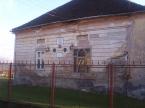Information
Bălan (Hungarian: Balánbánya, German: Kupferbergwerk) is a town in Harghita County, Romania. The northernmost municipality in the unofficial region of Felcsík, it is also one of Romania's most important centres for copper mining. Its Romanian name means "blond," while the Hungarian and German names reflect the importance of its mines.
Demographics
The town is ethnically mixed with a total population of 7,902, of which 5,121 (64,8%) are ethnic Romanians and 2,724 (34,5%) are Székely Hungarians (2002 census). There is also a small Roma population. The town is a demographic anomaly, surrounded by communities with overwhelming Székely majorities; its majority of ethnic Romanians results from the Communist policy of sending Moldavian villagers to work in Bălan's mines.
History
Bălan was the site of iron mining during the 17th century, but by 1702 the iron stores had been depleted. The copper deposits were discovered in 1785 by János Opra; production began in 1803, and by 1853 six mines were operating. From that period, the village gradually began to develop into a town. Until 1967, Bălan remained part of the commune of Csíkszentdomokos/Sândominic, finally gaining official town status in 1968.
Points of Interest
Bălan's main architectural site is the Roman Catholic church, consecrated in 1869. Despite the environmental blight of the mining, the surrounding area is uncommonly beautiful, taking in the nearby mountains of Nagy-Hagymás and Egyeskõ, the latter a popular hiking destination. The river Olt, one of Romania's most significant, originates in the mountains near the town.BalanBalan
Forrás: Wikipedia
Bălan

 English
English









